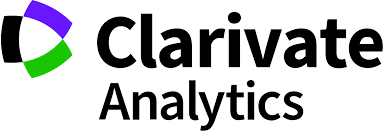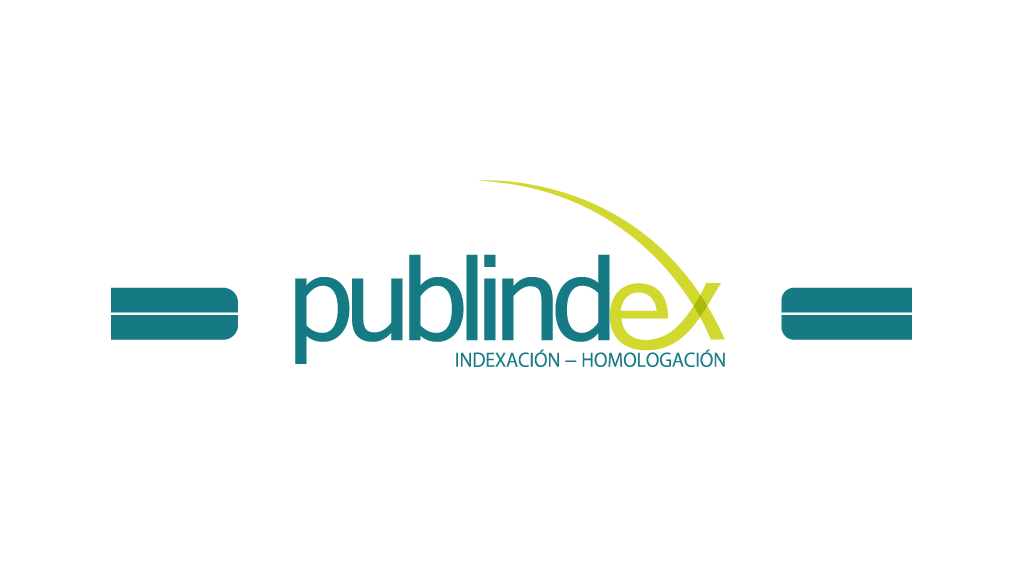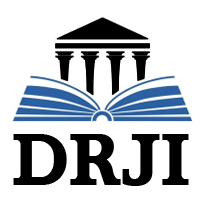Authors who publish in this journal agree to the following terms:
Acta Colombiana de Psicología complies with international intellectual property and copyright laws, and particularly with Article No. 58 of the Political Constitution of Colombia, Law No. 23 of 1982, and the Agreement No. 172 of September 30, 2010 (Universidad Católica de Colombia Intellectual Property Regulation).
Authors retain their copyright and grant to the Acta Colombiana de Psicología the right of first publication, with the work registered under Creative Commons attribution license, which allows third parties to use the published material, provided they credit the authorship of the work and the first publication in this Journal.
Abstract
The aim of this quantitative cross-sectional study was to analyze the relationship between the perception of adolescents about their tendency to use psychoactive substances and their parents’ attitudes. 487 Brazilian adolescents participated. For statistical analysis the Multinomial Logit Model was used, where the Stepwise method for selecting variables was applied. Tobacco, alcohol and marijuana were related to the variables of greatest influence on the use, abuse and dependence of these substances. Findings showed that an unloving father increases the possibility that the child becomes tobacco dependent (p = 0.001). An unloving mother is most likely to have a tobacco dependent child (p = 0.001). Father’s control is a protective factor for experimenting with tobacco smoking (p = 0.023) and for marijuana dependence (p = 0.042). The relationship between substance consumption in adolescence and the perception young people have about their parents’ attitudes was emphasized.
Keywords

References
Brook, J. S., Brook, D. W., Zhang, C. & Cohen, P. (2009). Pathways from Adolescent Parent-Child Conflict to Substance Use Disorders in the Fourth Decade of Life. The American Journal on Addictions, 18, 235–242. doi: 10.1080/10550490902786793
Chun, T. H., Spirito, A., Hernández, L., Fairlie, A. M., SindelarManning, H., Eaton, C. A. & Lewander, W. J. (2010). The Significance of Marijuana Use among Alcohol-using Adolescent Emergency Department Patients. Society for Academic Emergency Medicine, 17, 63-71. doi: 10.1111/j.1553- 2712.2009.00615.x
Elkington, K. S., Bauermeister, J. A. & Zimmerman, M. A. (2011). Do parents and peers matter? A prospective socio-ecological examination of substance use and sexual risk among African American youth. Journal of Adolescence, 34, 1035–1047. doi: 10.1016/j.adolescence.2010.11.004
Fallu, J. S., Janosz, M., Brière, F. N., Descheneaux, A., Vitaro, F. & Tremblay, R. E. (2010). Preventing disruptive boys from becoming heavy substance users during adolescence: A longitudinal study of familial and peer-related protective factors. Addictive Behaviors, 35, 1074–1082. doi: 10.1016/j. addbeh.2010.07.008
Faraway, J. J. (2006). Extending the Linear Model with R: ¬Generalized Linear, Mixed Effects and Nonparametric Regression Models. New York, NY: Boca Raton London.
Gorka, S. M., Shankman, S. A., Seeley, J. R. & Lewinsohn, P. M. (2013). The moderating effect of parental illicit substance use disorders on the relation between adolescent depression and subsequent illicit substance use disorders. Drug and Alcohol Dependence, 128, 1-7. doi:10.1016/j.drugalcdep.2012.07.011.
Hauck, S., Schestatsky, S., Terra, L., Knijnik, L., Sanchez, P. & Ceitlin, L. H. F. (2006). Adaptação transcultural para o português brasileiro do Parental Bonding Instrument (PBI). Revista de Psiquiatria do Rio Grande do Sul, (28)2, 162-168. doi: 10.1590/S0101-81082006000200008
Henrique, I. F. S., Micheli, D., de Lacerda, R. B., de Lacerda, L. A. & Formigoni, M. L. O. S. (2004). Validação da versão brasileira do teste de triagem do envolvimento com álcool, cigarro e outras substâncias (ASSIST). Revista da Associação Médica Brasileira, 50(2), 199-206. doi: 10.1590/S0104- 42302004000200039
Herman-Stahl, M. A., Ashley, O. S., Penne, M. A., Bauman, K. E., Williams, J., Sanchez, R. P., ...Gfroerer, J. C. (2008). Moderation and Mediation in the Relationship between Mothers’ or Fathers’ Serious Psychological Distress and Adolescent Substance Use: Findings from a National Sample. Journal of Adolescent Health, 43,141–150. doi: 10.1016/j. jadohealth.2008.01.010
Hibell, B., Guttormsson, U., Ahlström, S., Balakireva, O., Bjarnason, T., Kokkevi, A. & Kraus, L. (2012). The 2011 ESPAD Report Substance Use Among Students in 36 European Countries. Sweden, Stockholm: The Swedish Council for Information on Alcohol and Other Drugs (CAN).
Humeniuk, R., Ali, R., Babor, T. F., Farrell, M., Formigoni, M L., Jittiwutikarn, J., . . . Simon, S. (2008). Validation of the Alcohol Smoking and Substance Involvement Screening Test (ASSIST). Addiction 103(6), 1039-1047. doi:10.1111/j.1360- 0443.2007.02114.x
Johnston, L. D., O’Malley, P. M., Bachman, J. G., Schulenberg, J. E. & Miech, R. A., (2013). Monitoring the Future national survey results on drug use, 1975-2013 (vol. I): Secondary school students. Ann Arbor, Michigan: Institute for Social Research, The University of Michigan.
Kirby, T. & Barry, A. E. (2012). Alcohol as a gateway drug: a study of US 12th graders. Journal of School Health, 82(8), 371-379. doi: 10.1111/j.1746-1561.2012.00712.x
Kopak, A. M., Chia-Chen Chen, A., Haas, S. A. & Gillmore, M. R. (2012). The importance of family factors to protect against substance use related problems among Mexican heritage and White youth. Drug and Alcohol Dependence 124, 34-41. doi:10.1016/j.drugalcdep.2011.12.004
Laranjeira, R. (Org.). (2014). II Levantamento Nacional de Álcool e Drogas (LENAD) -2012. São Paulo: Instituto Nacional de Políticas Públicas do Álcool e Outras Drogas (INPAD).
Marmorstein, N. R., Iacono, W. G. & McGue, M. (2009). Alcohol and illicit drug dependence among parents: associations with offspring externalizing disorders. Psychological Medicine, 39(1), 149-155. doi:10.1017/S00 33291708003085
Miller, P. & Plant, M. (2010). Parental guidance about drinking: Relationship with teenage psychoactive substance use. Journal of Adolescence, 33, 55-68. doi:10.1016/j.adolescence. 2009.05.011
Moura, Y. G., Sanchez, Z. M. & Noto A. R. (2010). Diversity of Contexts in Drug Use among Street Adolescents. Qualitative Health Research, 20(9), 1241-1253.
Ohannessian, C. M. & Hesselbrock, V. M. (2008). Paternal Alcoholism and Youth Substance Abuse: The Indirect Effects of Negative Affect, Conduct Problems, and Risk Taking. Journal of Adolescent Health, 42, 198-200. doi:10.1016/j. jadohealth.2007.08.025.
Parker, G. (1989). The parental bonding instrument: Psychometric properties reviewed. Psychiatry Developed, (7)4, 317-335.
Parker, G., Tupling, H. & Brown, L. B. (1979). Parental Bonding Instrument (PBI). British Journal of Medical Psychology, 52, 1-10.
Patock-Peckham, J. A. & Morgan-Lopez, A. A. (2006). College drinking behaviors: Mediational links between parenting styles, impulse control, and alcohol-related outcomes. Psychology of Addictive Behaviors, 20(2), 117–125. doi: 10.1037/0893- 164X.20.2.117.
Piko, B. F. & Kovács, E. (2010). Do parents and school matter? Protective factors for adolescent substance use. Addictive Behaviors, 35, 53–56. doi:10.1016/j.addbeh.2009.08.004.
Pokhrel, P., Unger, J. B., Wagner, K. D., Ritt-Olson, A. & Sussman, S. (2008). Effects of Parental Monitoring, Parent-Child Communication, and Parents’ Expectation of the Child’s Acculturation on the Substance Use Behaviors of Urban, Hispanic Adolescents. Journal of ¬Ethnicity in Substance Abuse, 7(2), 200-213. doi:10.1080/15332640802055665.
Poulin, F. & Denault, A. S. (2012). Other-Sex Friendships as a Mediator between Parental Monitoring and Substance Use in Girls and Boys. Journal of Youth Adolescence, 41(11), 1488-1501. doi: 10.1007/s10964-012-9770-y.
Sanchez, Z. M., Santos, M. G. R., Pereira, A. P. D., Napo, S. A., Carlini, C., Carlini, E. A. & Martins, S. S. (2013). Childhood Alcohol Use May Predict Adolescent Binge Drinking: A Multivariate Analysis among Adolescents in Brazil. The Journal of Pediatrics, 163, 363-368. doi: 10.1016/j.jpeds.2013.01.029.
Teodoro, M. L. M., Benetti, S. P. C., Schwartz, C. B. & Mônego, B. G. (2010). Propriedades psicométricas do Parental Bonding Instrument e associação com funcionamento familiar. Avaliação Psicológica, 9(2), 243-251.
Virtanen, M., Pietikäinen, M., Kivimäki, M., Luopa, P., Jokela, J., Elovainio, M. & Vahtera, J. (2009). Contribution of parental and school personnel smoking to health risk behaviours among Finnish adolescents. BMC Public Health, 9, 382-390. doi:10.1186/1471-2458-9-382.
Winters, K. C., Fahnhorst, T., Botzet, A., Lee, S. & Lalone, B. (2012). Brief intervention for drug-abusing adolescents in a school setting: Outcomes and mediating factors. Journal of Substance Abuse Treatment, 42(3), 279-288. doi: 10.1016/j. jsat.2011.08.005.
Winters, K. C. (2008). Adolescent Brain Development and Drug Abuse. Minnesota: The Mentor Foundation.
World Health Organization. (2002). Working Group. The Alcohol, Smoking and Substance Involvement Screening Test (ASSIST): development, reliability and feasibility. Addiction, 97, 1183-1194. doi:10.1046/j.1360-0443.2002.00185.x































